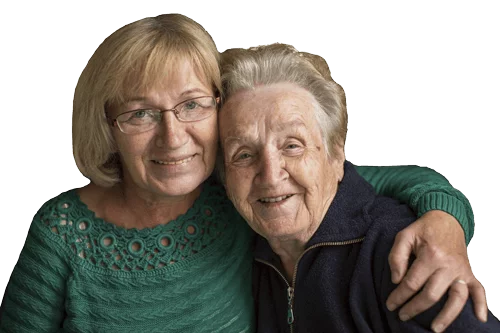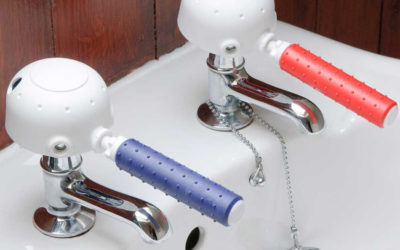Home /
Walk-in Baths
Here at Mobility Plus, we are the UK’s largest installer of walk-in baths for those wanting a safer, more comfortable and relaxing bathing experience.
Our walk-in baths are designed to provide safe, comfortable bathing for people with limited mobility or disabilities affecting movement in and out of the bath. All of our baths have safety features and comfortable integral seats to make bathing an easy and relaxing pleasure. Discover our range of mobility baths below.
Order your free brochure and design consultation today!
FREE brochure
0808 271 7693
Chromotherapy lighting, luxury spa system for relaxing bathing, and stylish glass door.
Walk-in baths features
- Non-slip surfaces
- Support hand bars
- Easy temperature control
- Low entry doors
- Stylish, modern design
- Ideal for those with low mobility
- Chromotherapy option
- Spatherapy option
“I’m so happy Mum has her independence back”
Mrs. A Smith

Manufactured to the highest standards, our walk-in mobility baths come in a variety of sizes and models to choose from, and all come complete with a lifetime product guarantee for your peace of mind. If your preferred bathing option is a walk-in shower, please take a look at these here.

Walk in Bath FAQs
What is a walk-in bath?
A walk-in bath is a bathtub that has watertight doors, allowing people to get into and out of the bathtub without having to lower themselves down into it.
Walk-in baths are usually compact and can be made so that the person sits up while bathing, but there are also more traditional walk-in baths that are full-length, allowing the person to lie down to enjoy their bathing.
There are also walk-in baths that have lifts which go one step further and help the person into the bath without them having to step through the door itself.
Walk-in baths create a much easier bathing experience for those with mobility issues, whether they are elderly or have low mobility in general.
How does a walk-in bath work?
Walk-in baths work by having the person open the door of the bathtub, step in via the very low threshold, enter and then close the door behind them, sealing the bathtub so that no water can escape.
Once you are settled in the walk-in bath, you select the temperature of the water you’d like, fill up the bathtub and then relax as you enjoy a luxurious bathing experience. Once finished, you simply drain the water, open the door and step out of the walk-in bath.
How much is a walk-in bath?
The cost of a walk-in bath can vary depending on the features that you want for it, as they can come with different options. Some of the factors affecting price are:
- The features that you choose for your walk-in bath
- The style of the bathtub, as there are some varieties
- Whether you choose to include any luxury additions, such as our innovative bath fillers
What are the advantages of having a walk-in bath?
Walk-in baths are specifically designed with certain features in mind, making the bathing experience much better for those with low mobility. The low-threshold entry point means that people can easily enter and exit the bath after bathing, while features such as hand grab rails making getting into the seat for bathing, safer and more manageable. They are great additions for creating mobility and disability-friendly bathrooms.
There are also features such as anti-slip flooring designed to minimise the risk of anyone slipping, while the super-safe and easy to use temperature controls mean that you can select the perfect bathing temperature, whether this is in the walk-in bath or before getting into the bathtub.
There are also features such as anti-slip flooring designed to minimise the risk of anyone slipping, while the super-safe and easy to use temperature controls mean that you can select the perfect bathing temperature, whether this is in the walk-in bath or before getting into the bathtub.
You might also find useful our top tips for bathroom health and safety if you’d like to know more about the advantages of walk in baths and showers.
Are there any downsides to walk-in baths?
One potential downside of walk-in baths is that they can take longer to fill and drain than traditional tubs, depending on size. However, the added safety and therapeutic benefits greatly outweigh this.
Do walk-in baths leak?
Walk-in baths are designed to be leak-proof when installed and fitted with leak-proof seals. Proper installation by a professional is essential to prevent leaks and ensure that the bath functions as intended.
Do you have to sit in a walk-in bath while it fills?
Yes, most walk-in baths have a built-in seat, which allows users to sit comfortably inside the tub while it fills up with water. To prevent scalding and maintain a consistent temperature, walk-in baths are equipped with thermostatic bath fillers.
How long does a walk-in bath take to fill?
The time it takes to fill a walk-in bath will depend on the size of the tub and the water pressure in your home. On average, a walk-in bath can take anywhere from 5 to 15 minutes to fill.
How long does a walk-in bath last?
The lifespan of a walk-in bath can vary depending on the quality of the materials used; it could last you a lifetime. Our walk-in baths are covered by a 15-year warranty.
How do you get out of a walk-in bath?
After draining, walk-in baths have a door that opens either inward or outward, allowing users to easily step out of the tub. Some models may also have a built-in seat that can be raised or lowered to assist with getting in and out of the tub.
Help and guides about walk-in baths
Mobility-style baths: Why they help with bathroom safety
Mobility-style baths, or walk-in baths, are an excellent alternative to traditional baths for those with mobility difficulties....
10 Best Washing Aids for The Elderly & People with Disabilities
Far from being a sign that you are losing your independence, disabled washing aids in fact, can mean quite the opposite. For people living with a disability, the simple task of washing can be a challenge, yet feeling safe while you bathe is very important. Daily...
5 things to consider when you install a walk-in bath
Walk in baths are the ideal solution to transform your bathroom with safety and comfort. If you’re considering a walk-in bath, here are the essential things to know before taking the next step.
Order your free brochure and design consultation today!
FREE brochure
0808 271 7693














